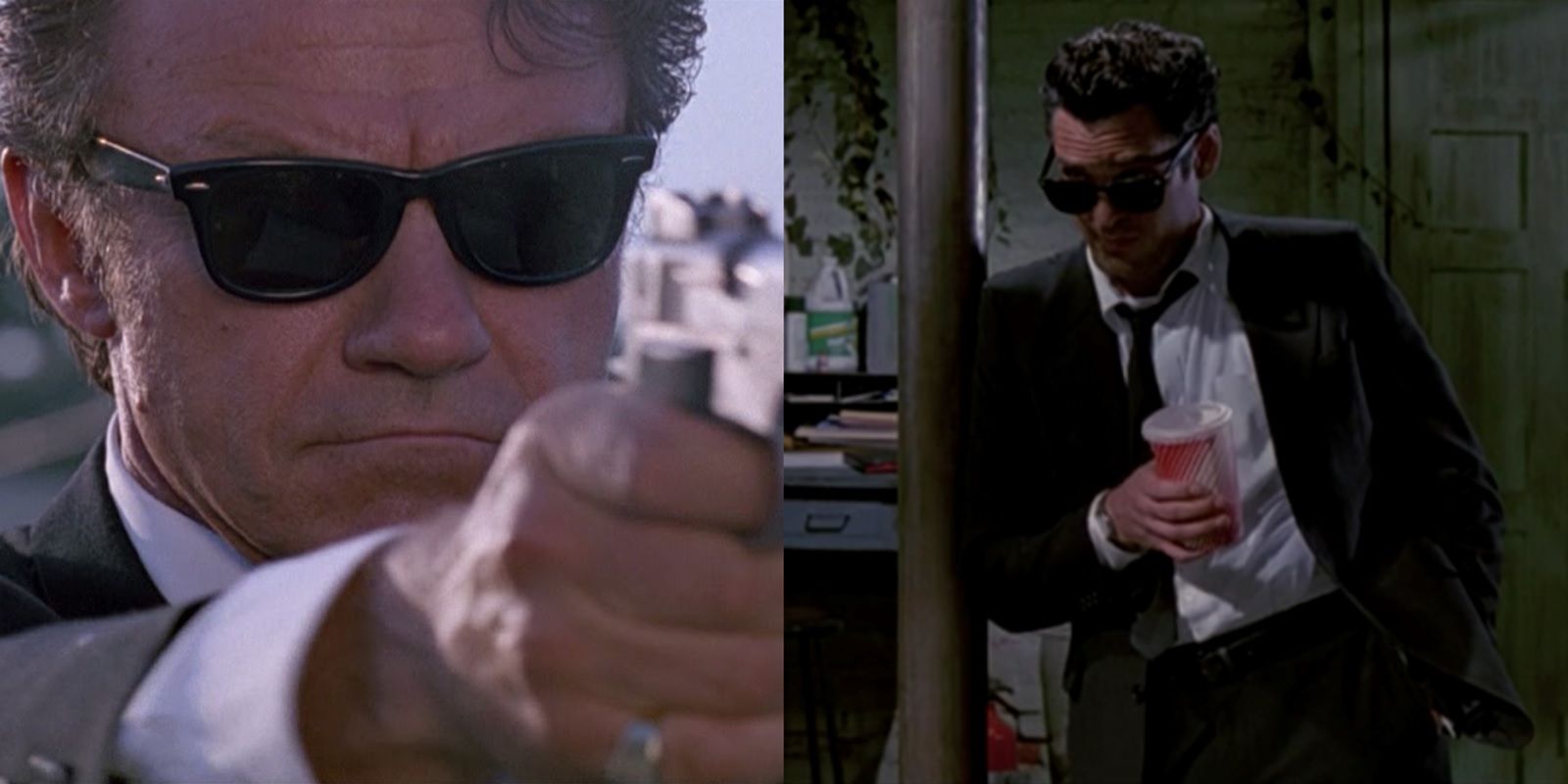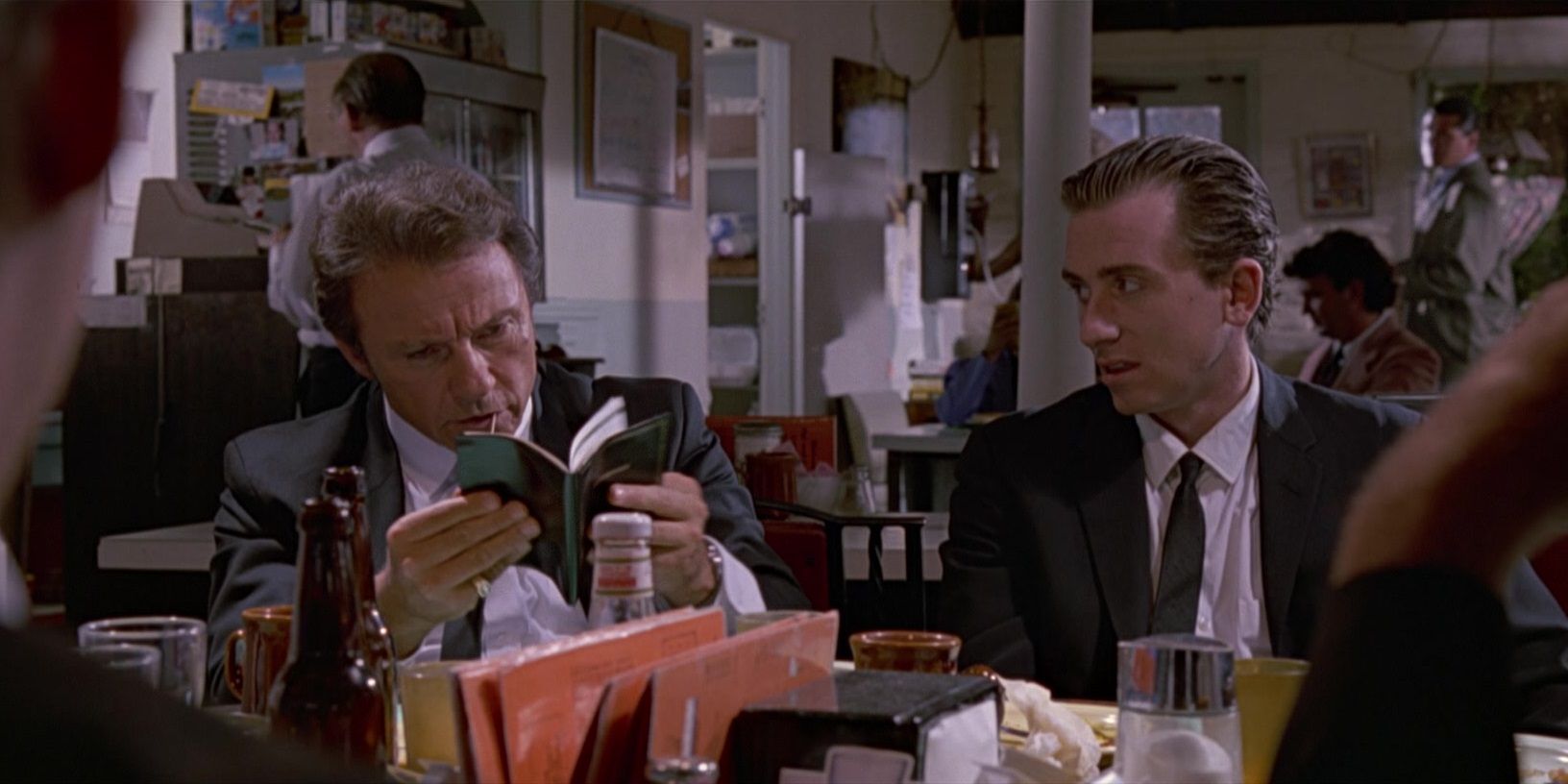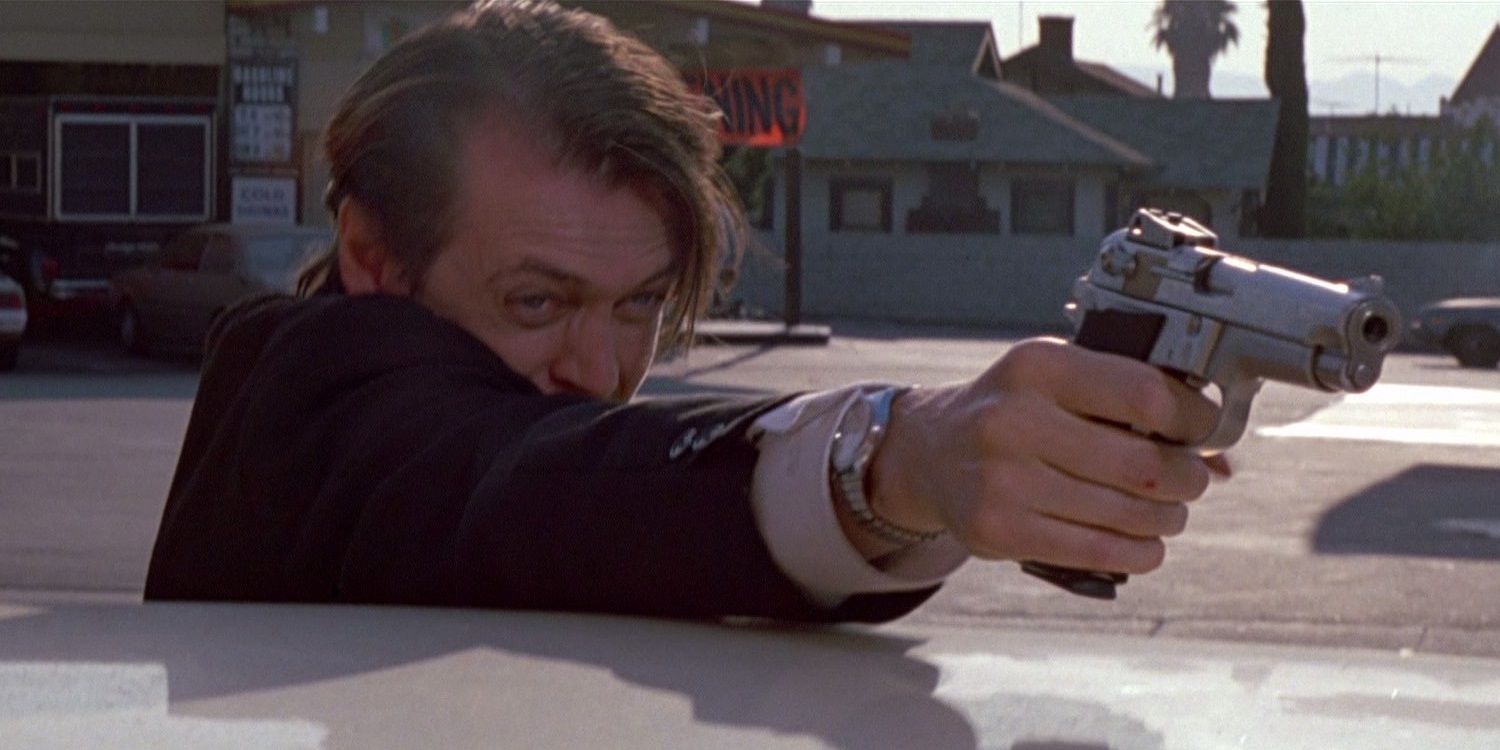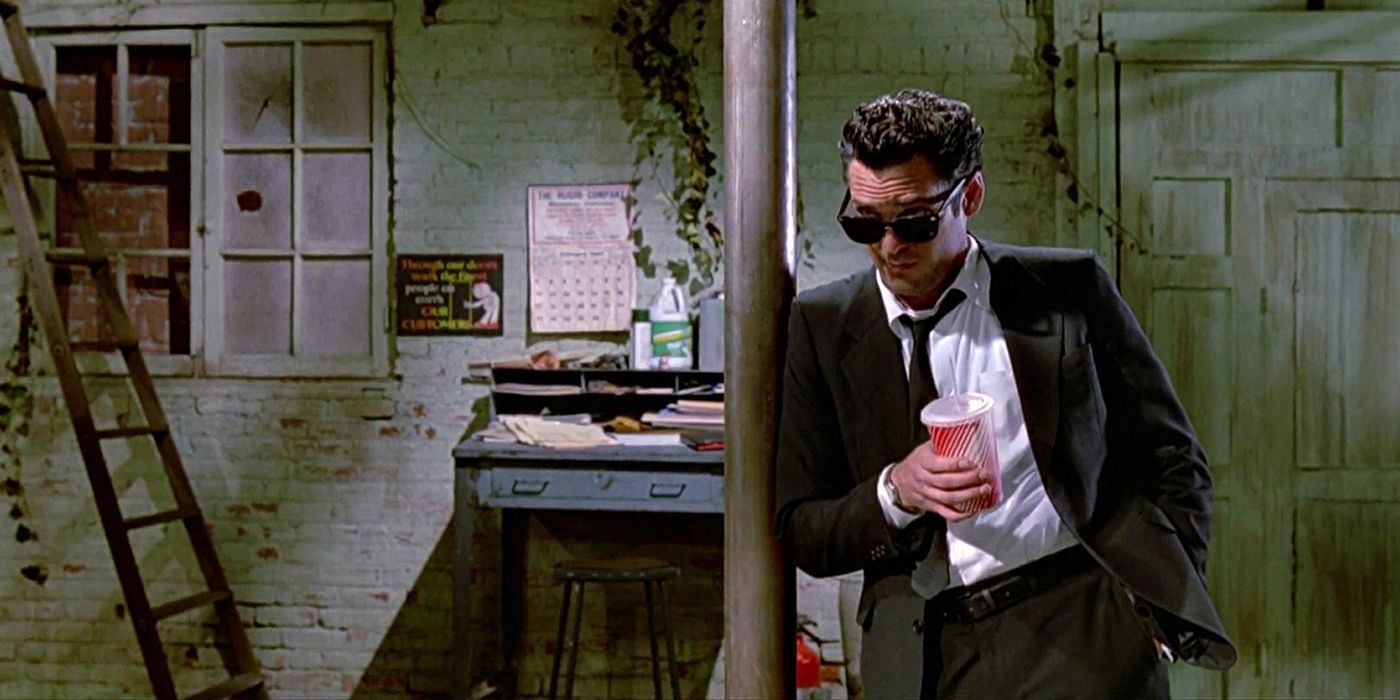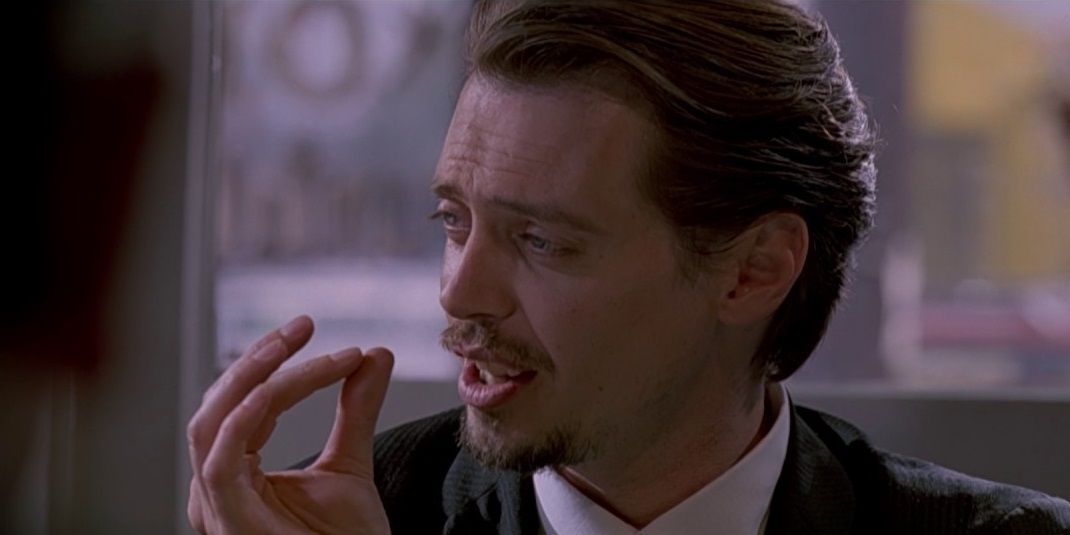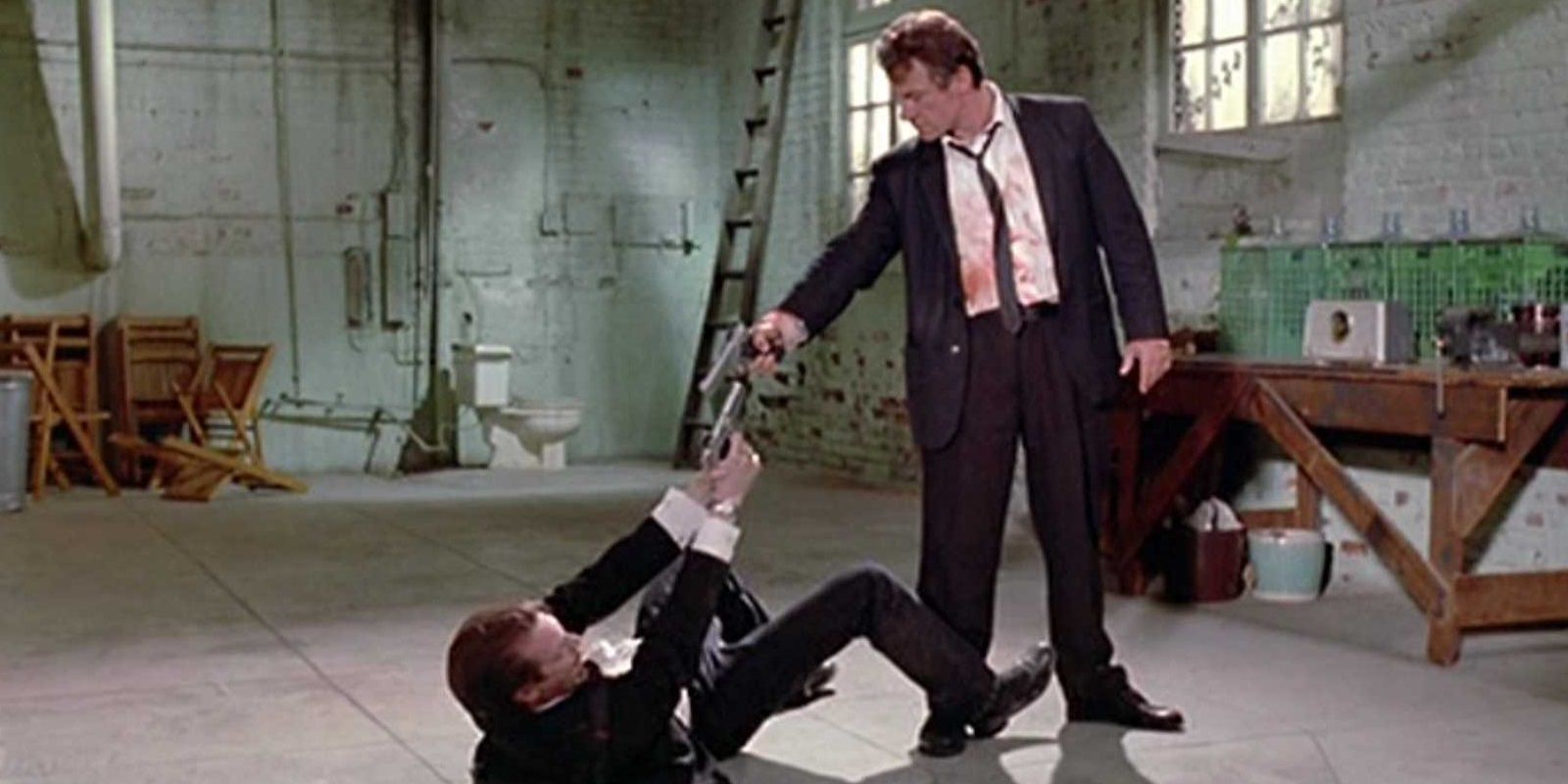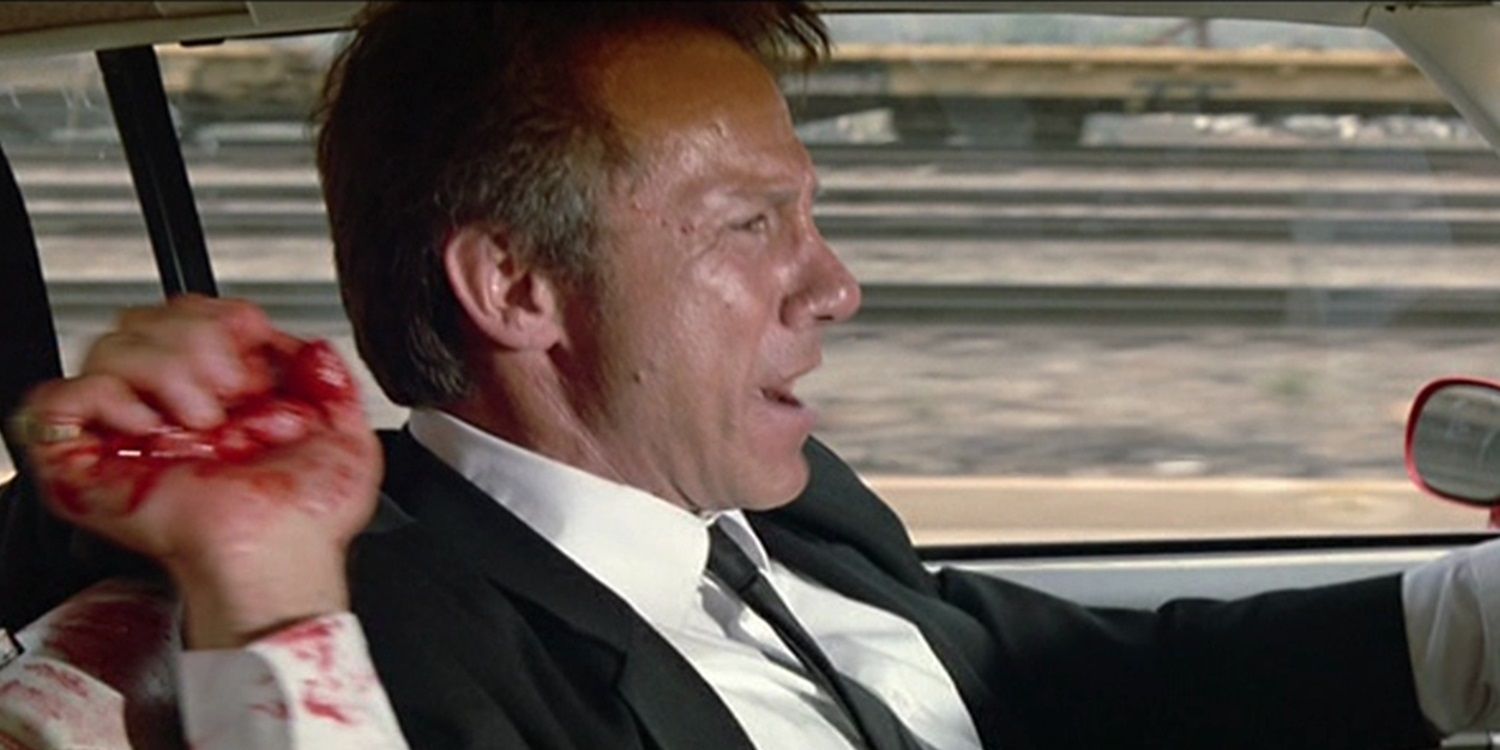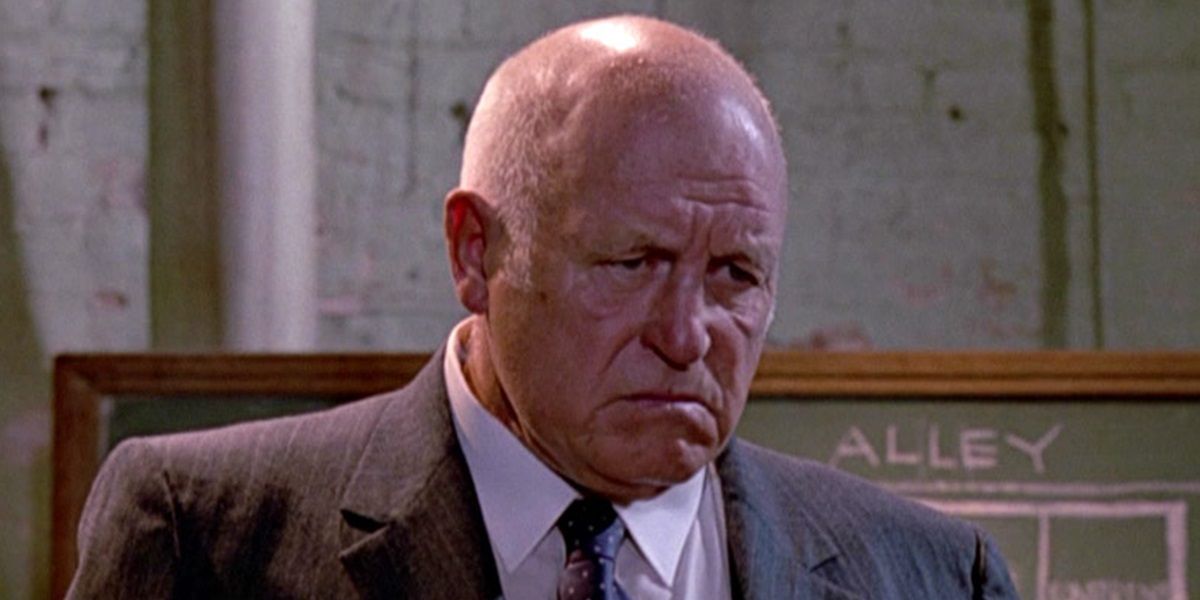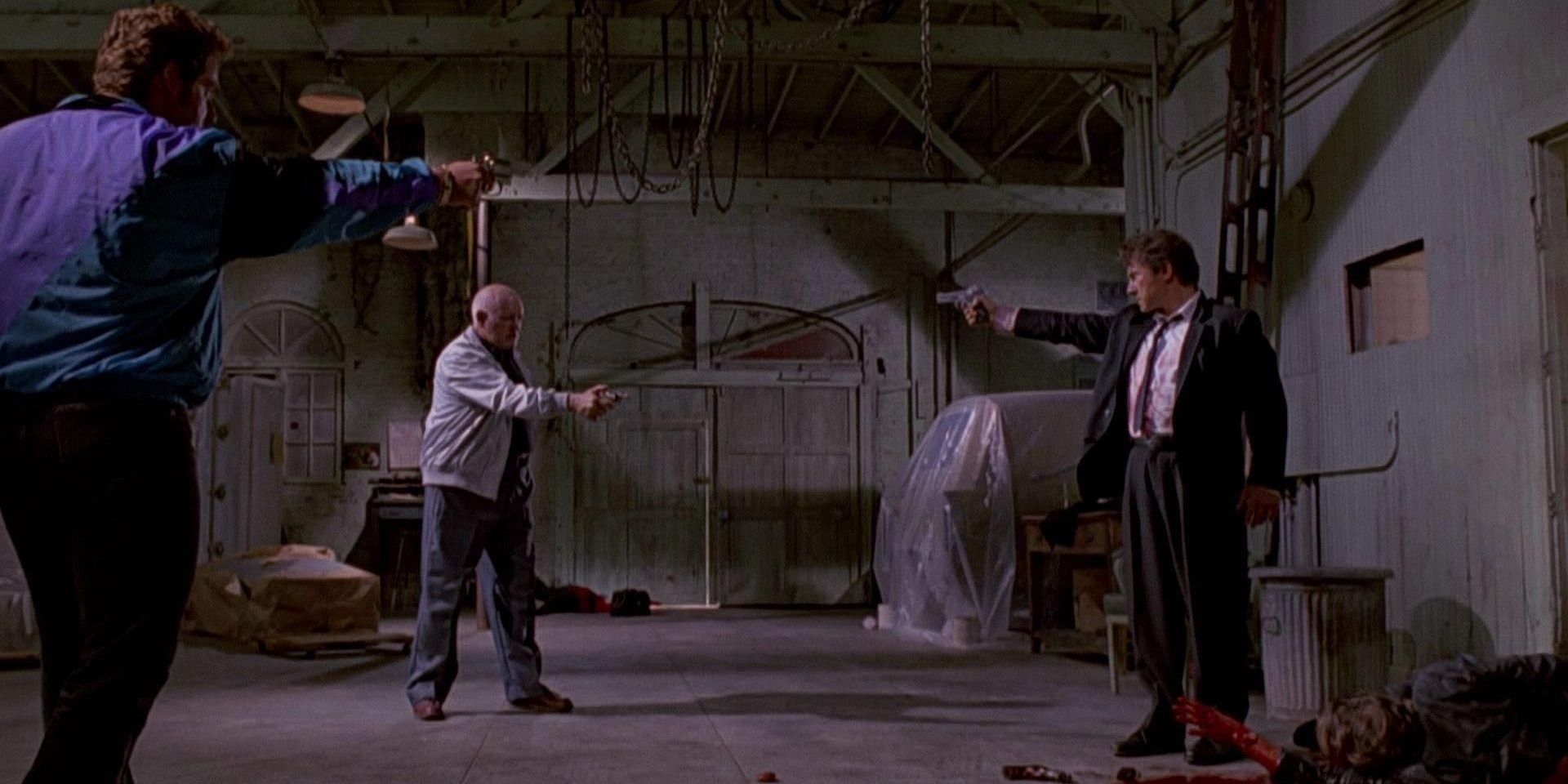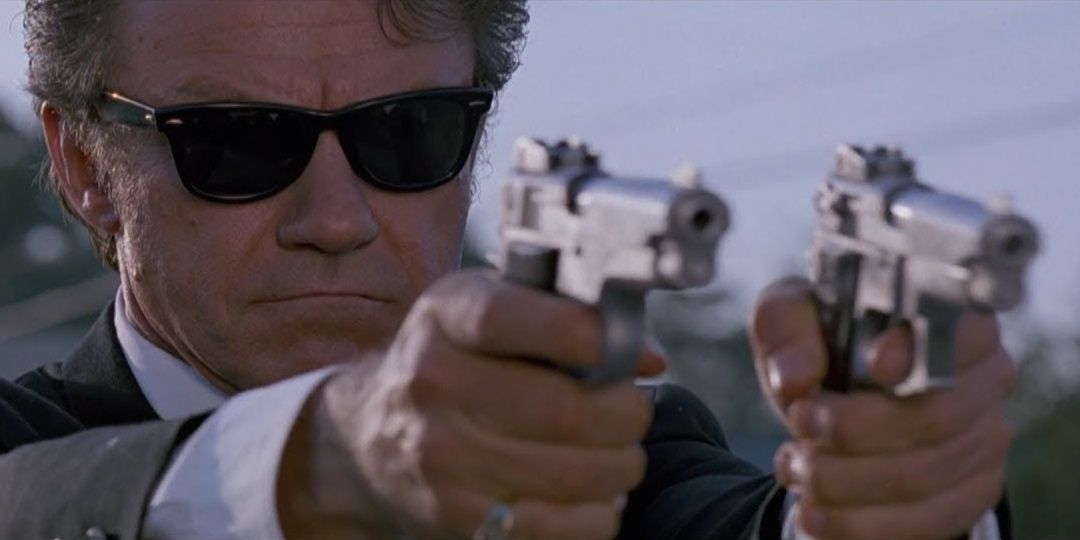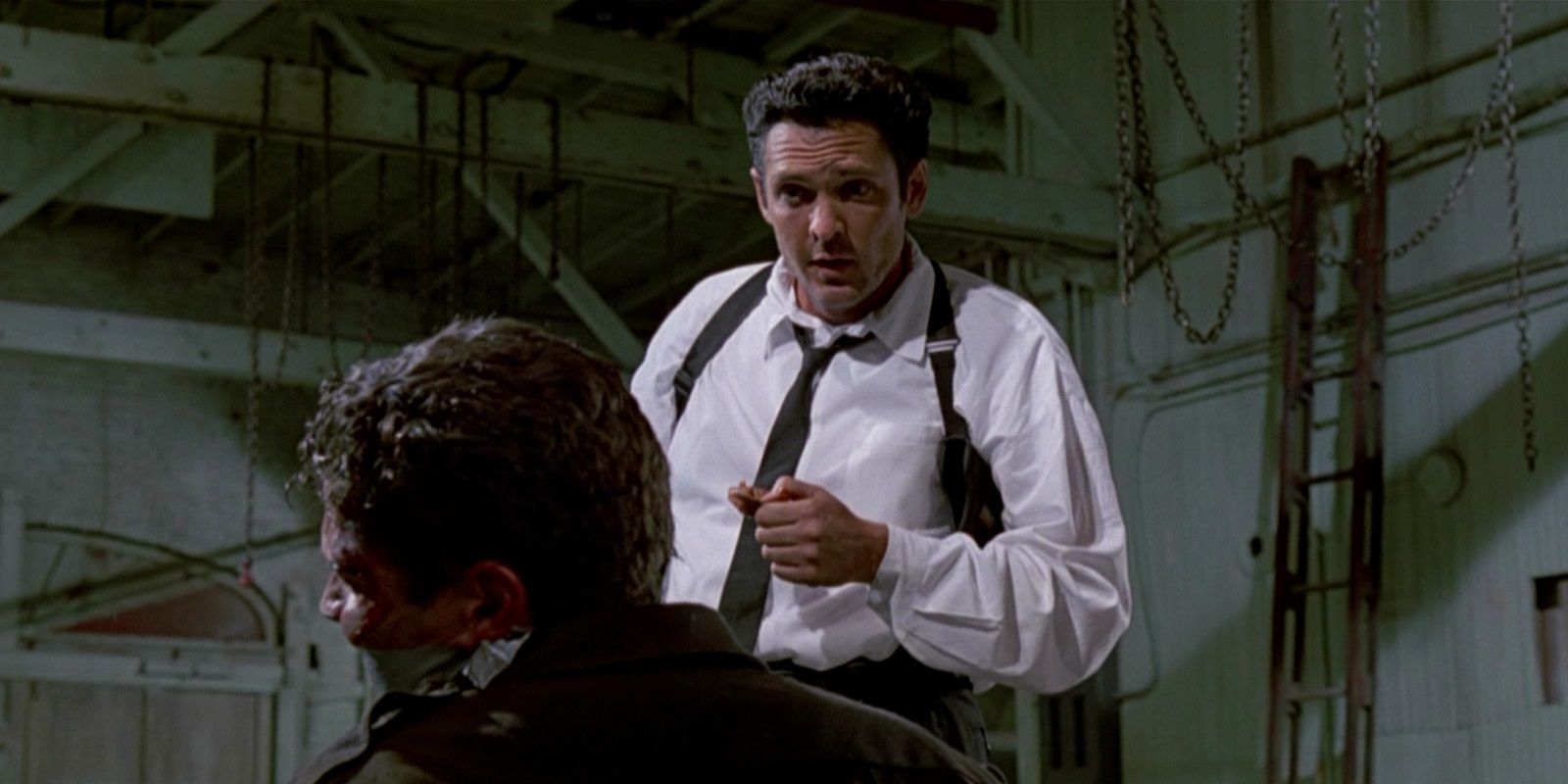Quentin Tarantino has come a long way since he helmed his debut feature for just over $1 million confined mostly to a single location, but Reservoir Dogs still holds up as a tense crime thriller and a groundbreaking work of indie cinema. The ambitious writer-director has since gone on to helm a $100 million spaghetti western about American slavery and a martial arts revenge tale so grandiose that it had to be split into two separate movies.
Nevertheless, Reservoir Dogs remains one of his finest films, and almost three decades later, it still packs a punch. It holds up so well that Tarantino even considered remaking it as his tenth and final movie.
The Opening Diner Scene
The opening scene of Reservoir Dogs, in which the guys eat breakfast in a diner and discuss everything from Madonna to tipping etiquette, is the perfect introduction to the movie (and to Quentin Tarantino’s cinematic voice).
Mundane conversation among career criminals would become one of the hallmarks of Tarantino’s early movies. The Seinfeldian banter instantly establishes Reservoir Dogs as a unique kind of gangster movie, and massively subverted audiences’ expectations of the familiar crime genre.
The Off-Screen Heist
The fact that the heist happens off-screen might have been a cost-cutting decision, but it works brilliantly for the movie because it keeps the audience guessing. If Tarantino showed the heist, the audience would know exactly what went wrong.
But after jumping from the breakfast before the job to the blood-soaked aftermath of the failed heist, the audience has to put the pieces together themselves, and Tarantino doesn’t start to fill in the gaps until the midpoint reveal.
Michael Madsen’s Disturbingly Charming Turn As Mr. Blonde
Mr. Blonde is one of Tarantino’s most sadistic characters. Michael Madsen was the perfect choice for the part, because he’s certainly unnerving, but he also brings an irresistible charisma to the role.
When he’s leaning against a post in a pair of sunglasses, sipping on a soda, he looks really cool. But when he’s cutting off a police officer’s ear and speaking into it, he’s terrifying. Madsen walks this treacherous line masterfully.
K-Billy’s Super Sounds Of The ‘70s
Tarantino’s soundtracks are one of the most beloved facets of his filmmaking, and Reservoir Dogs is still one of his greatest soundtracks. There are timeless ‘70s hits peppered throughout the movie for a bunch of dynamite needle-drop moments.
The soundtrack has a meta through-line as a typically deadpan Steven Wright introduces each track as part of a K-Billy radio show called Super Sounds of the ‘70s.
The Stylized Violence
Stylized violence is perhaps the most instantly recognizable trait of Tarantino’s filmmaking. Even Once Upon a Time in Hollywood, which chronicles a day in the lives of a couple of movie stars, culminates in a stomach-churning, adrenaline-pumping bloodbath.
The excessive squibs, constant gunfire, and armed standoffs of Reservoir Dogs established Tarantino’s penchant for stylish (if graphic) violence from the offset.
Mr. White & Mr. Orange’s Father-Son Dynamic
While Reservoir Dogs is often noted for its style over its substance, the movie does have a compelling emotional core: the father-son dynamic between Mr. White and Mr. Orange.
After Mr. Orange gets shot and Mr. White desperately tries to convince him he’ll be okay, the two become a sort of surrogate father and son to each other, which makes the final twist even more tragic.
The Nonlinear Structure
Nonlinear storytelling has become synonymous with Quentin Tarantino. Much like Pulp Fiction, Kill Bill, and The Hateful Eight, Reservoir Dogs tells its story out of order – and that structure makes the narrative’s payoffs all the more effective.
Tarantino cuts from the breakfast to the aftermath of the heist, then builds to the shocking twist reveal, then starts to explain how everything came to be: how all the guys got hired, how an undercover cop infiltrated the group, and what happened after the heist went south. This all-over-the-place yet sharp structure is much more interesting than simply telling the story from start to finish.
The Tension Of The Climactic Standoff
Armed standoffs can be seen in a bunch of Tarantino movies, from the diner stickup in Pulp Fiction to the basement shootout in Inglourious Basterds. This hallmark first appeared in Reservoir Dogs.
Joe wants to kill Mr. Orange, so Mr. White pulls a gun on Joe, prompting Joe’s son “Nice Guy” Eddie to pull a gun on Mr. White. The tension of this standoff still holds up today, as does the explosive payoff of everybody’s guns going off at once.
Harvey Keitel’s Endearing Performance As Mr. White
Reservoir Dogs is an ensemble piece, but if it does have a star, it’s Harvey Keitel as Mr. White. Mr. White has to choose between Mr. Orange, who becomes a sort of surrogate son, and Joe Cabot, who’s a sort of father figure to him.
While Mr. White is a sociopathic criminal, his connection with Mr. Orange makes him emotionally engaging and somewhat likable. Keitel’s endearing performance leans into the tragedy of his character’s misplaced trust.
The “Stuck In The Middle With You” Torture Scene
Easily the most memorable scene in Reservoir Dogs is the “Stuck in the Middle with You” torture scene. This was the biggest talking point surrounding the movie when it hit the festival circuit back in the early ‘90s, and even prompted a number of mid-screening walkouts.
The juxtaposition of the whimsical, lighthearted Stealers Wheel hit against the disturbing imagery of a psychopath gleefully torturing a cop remains one of the greatest examples of Tarantino’s pitch-black comic sensibility at work.

